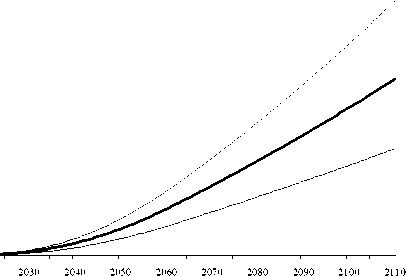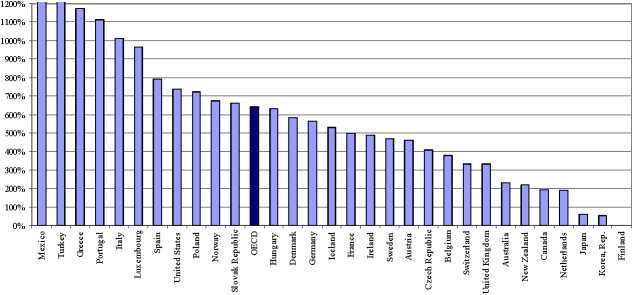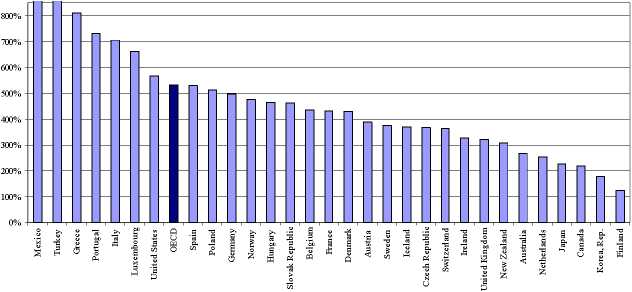60%


Year
Figure 4. Improvement in annual GDP with Scenario I (increase everyone by ¼ std. dev.)
Notes: GDP with reform relative to GDP without reform in each year after the reform starts. Main line:
point estimate of Scenario I. Gray dotted lines: 95% confidence internal of the point estimate of the
growth regression.
Source: Authors’ calculations.

Figure 5. Present value of Scenario II (bring each country to Finish level) in percent of current GDP
Notes: Discounted value of future increases in GDP until 2090 due to a reform that brings each countιy to the Finish
average level of 546 PISA points, expressed as percentage of current GDP. Value is 2389% for Mexico and 1844% for
Turkey.
Source: Authors’ depiction based on the projection analysis reported in column (3) of Table 7.

Figure 6. Present value of Scenario III (bring everyone up to minimum skills) in percent of current
GDP
Notes: Discounted value of future increases in GDP until 2090 due to a reform that brings every individual in the country
up to a minimum skill level of 400 PISA points, expressed as percentage of current GDP. Value is 1794% for Mexico
and 1430% for Turkey.
Source: Authors’ depiction based on the projection analysis reported in column (7) of Table 7.
KOR
FIN

CZE
SLK P0L HUN
NEW

SPA
POR
GRE
NET
AUS j⅛½L
DEN
--SWE te*oτ
GBWA
NOR
ITA
SWI
USA

20000 40∞0 60000 80000 100000
Cumulative expenditure per student
Figure 7. Educational spending and student achievement across countries
Notes: The figure plots the average math achievement in PISA 2006 against cumulative expenditure
on educational institutions per student between age 6 and 15, in US dollars, converted by
purchasing power parities. Gray line: regression line for full sample. Black line: regression line
for countries with expenditure above $20,000.
Source: Authors’ depiction based on Organisation for Economic Co-operation and Development (2007).
More intriguing information
1. The name is absent2. Konjunkturprognostiker unter Panik: Kommentar
3. Transgression et Contestation Dans Ie conte diderotien. Pierre Hartmann Strasbourg
4. The name is absent
5. Evidence-Based Professional Development of Science Teachers in Two Countries
6. The name is absent
7. The name is absent
8. The name is absent
9. If our brains were simple, we would be too simple to understand them.
10. The name is absent